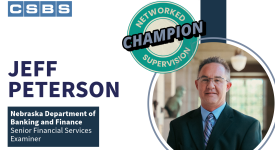Consumers
Networked Supervision protects you:
- Where your money is stored, whether in a bank or in a digital wallet.
- When you engage with a bank or company licensed to do business in your state.
- When your money moves, whether it is paying a company, getting paid or sending money to your friends and family.














